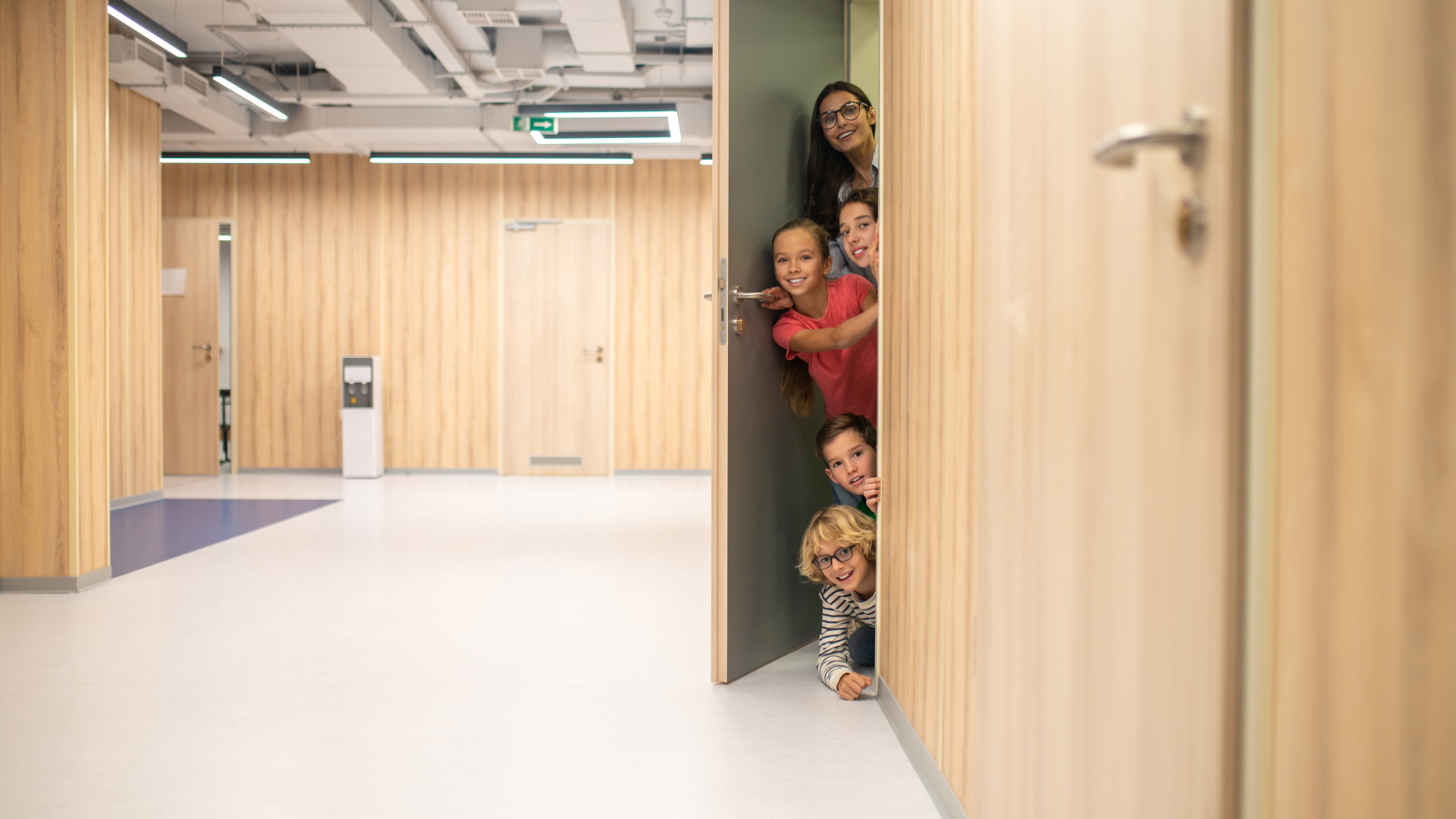What do you do when off-task behaviours and student disruptions occur? Here are some things you can do to establish procedures and avoid disruptions.
Greet students at the door and give them a piece of construction paper in a specific shape and colour. The paper matches the different symbols that are hanging above each group of desks -call them your ‘lucky charms’. Each student sits at the group of desks, which has the same charm. As the term progresses, move the tables into different configurations and change the ‘lucky charms’. The purpose is to have students sit away from their self-selected friends.
Breaking up friend groups in the seating arrangements from time to time is a powerful way to avoid the covert whispering-laughs-at-the-teacher or other students.
Text by: Anastasia Spyropoulou

In the picture, you see a block of A, B, C, and D letters. These letters correspond to the layout of each of the groups of four desks. Give them directions. The As get an index card for each student in their group from a few stacks of cards placed on a table in front of the room. A few stacks help prevent a line of students from waiting. The Bs get Popsicle sticks, say at the back of the room; Cs would go to the window sill and get bundles of markers. The students get a little movement combined with a little social interaction.
How do you keep them from dilly-dallying? First explain the directions so everyone knows what they’re supposed to be doing. They may give you a thumbs up, if they understand. And then…here is where the master teacher trick comes in. Use a timer: 30 seconds. The timer becomes a way of keeping students productive and efficient.
Students use the index cards to construct nameplates. Show how you want them to fold them: ‘hot dog style’. Ask them to write the name they want you to call them on the front and big. Then the last name smaller. You may ask them to put a picture of themselves on the index card. This dresses up their cards. At the end of the lesson students place their cards at a table near the entranceway.
How can you take attendance? Students pick up their cards when they come in and put them on their desks. These cards become your way of taking attendance because whichever cards are left on the table signify missing students. Before the class begins, double-check to make sure these cards are actually absent students and not just ones who forgot to take their card. During class, write on the card the date they were absent and what they missed. When they return, they look inside their card and know what they have missed. At the end of the class, students stack their cards on the table. The procedure becomes so mechanical that it works like a well-oiled machine.
So, what’s the business with the Popsicle sticks? Ask students to write their names on them. Then put a rubber band around each set of sticks. During class, when you want to randomly call on students, pull a Popsicle stick out of your bundle. You may sometimes get a student to pick a stick to call on a peer. These types of procedures, which gradually become habits, really do speed up typical classroom processes. They also help build community. Everyone knows what they ought to be doing and if they don’t, they see what the others are doing, or they ask a peer to find out.
Here’s one more way to condition your students. Train them to give you their instant intention with a bell. The universal purpose of a bell is to gain someone’s attention. It works even in the classroom. Ringing the bell is a quick way to get your students’ attention back after you’ve done a pair or small-group work. One minute can easily turn into five minutes when you lose your students’ attention and have to fight to get it back. Tap the bell hard enough so it is clearly heard. If it is necessary, tap it two or three times or ask a student to ring the bell.
Planning is a crucial skill to achieve any goal. Plan your lessons daily or weekly. Then reflect on the results. No matter how long you have been teaching, planning should always be done especially when you have learners with different skills and ‘levels of intelligence’. Some learners need repetition, others do not. How will you handle such situations? Plan diligently.
You can use Trello as the main tool for planning. Each student has his or her private board in this application. They estimate achievements, tick tasks in their to-do lists, and what’s more important, your students have an overview or the studying process.
